Kellen Smetana
As noted in the previous post, we pulled into Venice and it was time yet again for major changes to the Revolutions for Relief team. Megan was returning to Maryland to continue “real work” and we would again be reduced to two. Megan was 100% for the cycling trip from the get-go but it took many emails from China to actually convince her to come. In the end, the emails paid dividends and our trip across Eastern Europe would not have been the same without her. She single-handedly doubled our “high-five count” for the region, taught us the importance of eye-brow plucking even in rural Turkey, laughed at our jokes, somehow attracted circles of children around us at all times, and gave new meaning to musical analysis with the song We Are the World (The Boss is definitely the best – see last post). Megan was a perfect addition to the team and she will be missed as we continue across Europe.
As noted in the previous post, we pulled into Venice and it was time yet again for major changes to the Revolutions for Relief team. Megan was returning to Maryland to continue “real work” and we would again be reduced to two. Megan was 100% for the cycling trip from the get-go but it took many emails from China to actually convince her to come. In the end, the emails paid dividends and our trip across Eastern Europe would not have been the same without her. She single-handedly doubled our “high-five count” for the region, taught us the importance of eye-brow plucking even in rural Turkey, laughed at our jokes, somehow attracted circles of children around us at all times, and gave new meaning to musical analysis with the song We Are the World (The Boss is definitely the best – see last post). Megan was a perfect addition to the team and she will be missed as we continue across Europe.
The three of us had been to Venice previously and we all remembered it as a completely pedestrianized – and hence, “pedestrian-friendly” – city. Our assumption that “pedestrian friendly” translated to “cyclist-friendly” was proven dead wrong the second we arrived. At every entry to the city we looked to pursue, we were met with walls of stairs. Then we peered further in and remembered that Venice has more canals than streets, and each canal is crisscrossed by stairs and stairs and stairs. In case it isn’t apparent, lugging an 80 pound bicycle (and later bike boxes) up and down stairs through hordes of tourists is not fun. In the end, we resorted to sending each other on reconnaissance missions for hotels to avoid the hassle. The one redeeming benefit from our stairmaster work was the applause we got from bemused tourists for whom we no doubt must have been the most odd-looking trio of the day.
As is always the case, we eventually conquered our little Venice “hills,” saw Megan off, stopped in a locksmith to fix Bill’s bike, and then Bill and I were back to the races. We had other deadlines to hit and more roads to travel. Now an all-male tandem, we were instantly urged to flaunt our increased testosterone with a quicker pace, more extreme campsites, less small-talk, and by incorporating a gelato break into every afternoon. Yes, even the most seasoned cyclists can fall victim to the sweet appeal of Italian gelato. It became such a tradition that there was real concern if we thought we would not pass a Gelateria in the afternoon. We planned well, were always successful, and even devised the excuse that it was a perfect way to explore the smaller towns along the route.
For our route through Italy, we were inspired by Clif Bar anecdotes (adventure stories on Clif Bar wrappers) to traverse the smallest roads possible (we were also helped by the fact that Italy has much better road infrastructure than any country previously). We stormed along through the beautiful northern Italian countryside, only hopping on more major roads to cross through cities. In these instances, we were met with something we had not seen before. It seemed that many Italian drivers were more concerned with our biking than with their own driving: they honked and swerved wildly just to give us a disapproving finger wag for the fact that they had to share a bridge or motorway with us. How dare we! Bill and I just waved, smiled, and showed off glimpses of our thick skin.
It was actually a very surprising sight given the incredible number of other cyclists we encountered on the road. Italy was full of them: we met at least 15 to 20 every day. On road bikes they can really sneak up on us tanks. There were several instances where I heard an exclamation from Bill and looked back to find a cyclist had crept from behind to dish out an encouraging pat on the back. After a good laugh, they were always ready to give out a mini Italian lesson for the next kilometer or so as we gave them our story and asked about the region.
In Italy we also found ourselves spoiled rotten with charming small towns. As we entered each one, I always imagined this same town in America, where tourists would flock for the medieval walls, Renaissance churches, or string of street-side cafes; in Italy, we had them all to ourselves. There were parallel towns 20km in every direction, and for the residents, these attributes were as basic to their town as were the post office and town hall.
We sat down for lunch in one of these small towns at the foot of the Apennine Mountains. I had always assumed northern Italy (south of the Alps) was absolutely flat; so when we began to plan our route from Venice to southern France, I was surprised to find strong elevation gradation between us and the Mediterranean. At the restaurant, I figured we better learn about our upcoming climbs and challenged our host, Paulo, to tell us a little about the route. “Well,” he quickly replied, “Ernest Hemingway once said that the Trebbia Valley [where we would be riding] is one of the most beautiful places on earth.” A much more satisfactory answer than I ever expected and one quickly proven true as we rode higher. The quaint Italian towns continued and the scenery opened into a deep river valley for the next two days.
Our only issue in this mountainous region was the lack of restaurants and open campsites. One evening as dusk was setting, we found ourselves still many kilometers from the next large town. As we regrouped to strategize, Bill saw that the single home nearby had one too many tables on the front porch. “Could that be a restaurant?” we wondered. After scouring the empty house, we finally bumped into a woman working in the adjoined shed, who assured that “of course she would cook us dinner.” I guess it’s a restaurant. Several pasta plates into one of our best meals of Italy, we realized it was now completely dark outside the still vacant restaurant. I figured it was an appropriate time to lay out our desires to sleep on her patio; after some charming and a lot of persistence, she agreed. We slept as well as the cement on which we rested.
The next morning we awoke for our ride into Genoa. We were at such an altitude that most of the morning’s ride was above the clouds. The cameras were flying until the sun broke above the peaks.
We took a rest day in Genoa, catching a bit of the Michigan game online and rubbing elbows with Genoese youngsters in a night out on the town, but we were soon back on the trail. It was time to return to the coastal riding we knew all too well in Europe: this time, the mighty Med.
The next two days we rolled on along the Mediterranean, encountering yet more cyclists en route. One particular gentleman introduced us to a 30km cycling path paved over old rail tracks. It was a welcome change from our shoulder riding and took us up to the border with France. We exited Italy slightly plumper than we entered (gnocchi and gelato diet, coming out 2012 in the States) and pleased that we had another major country under our belts. We had high expectations for our next country and they seemed to be welcomed with open arms as we entered France under the full morning sunshine of the Cote d’Azur.

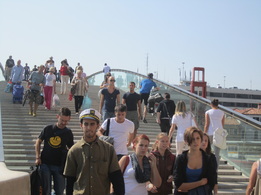
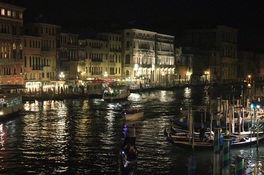
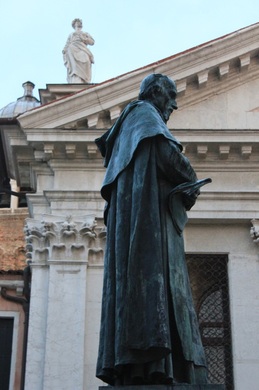





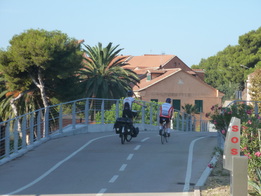





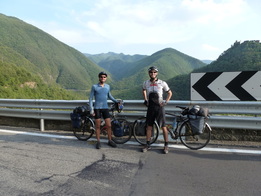

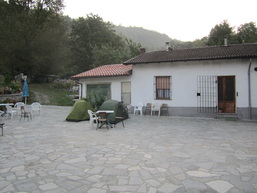


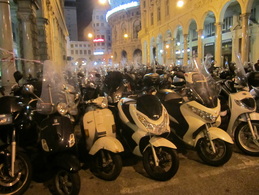





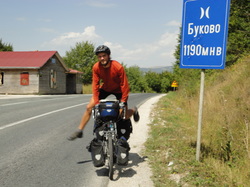








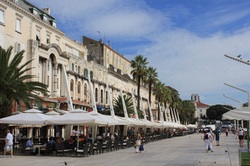
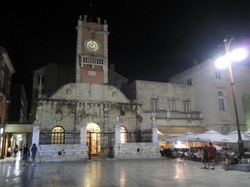



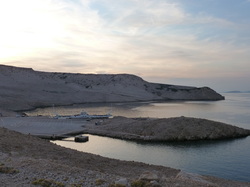

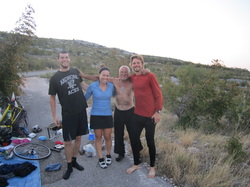


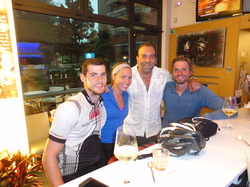

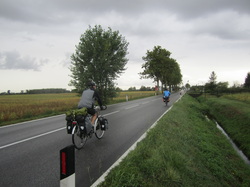
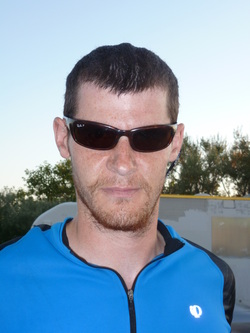
 RSS Feed
RSS Feed